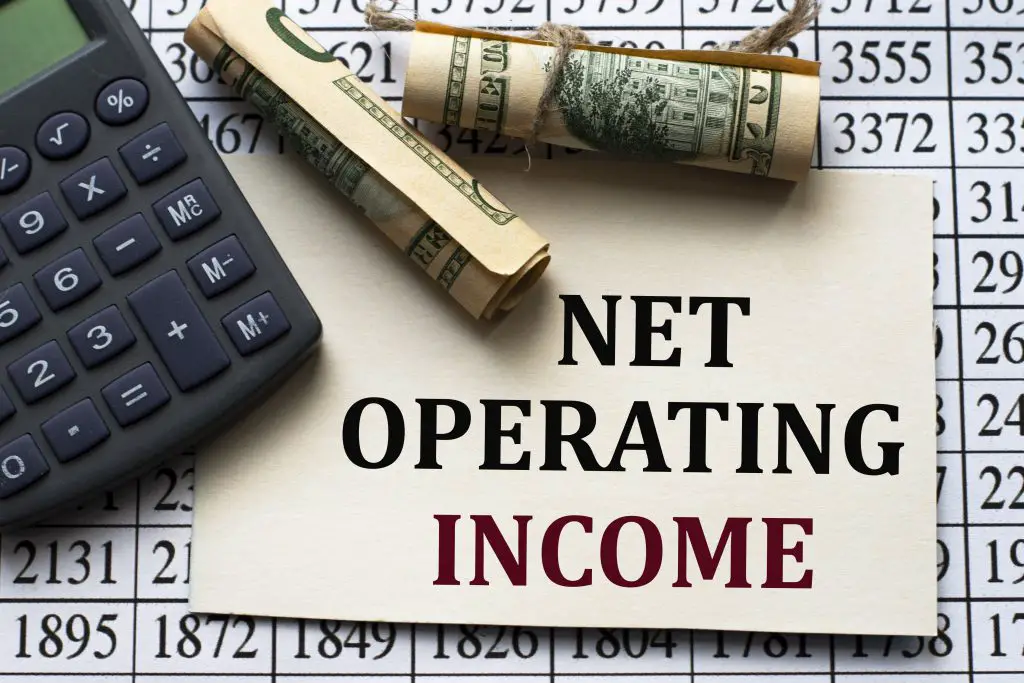Have you ever wondered about the best way to determine the actual value of a potential rental property purchase? What type of tools do you use to calculate the performance of land and property you’re considering for purchase? We’ve built a handy Cap Rate Calculator for calculating Cap Rate to help with this! We’ll also explore how you can use the Cap Rate Calculator on your next property purchase. Keep reading to find out how you can use the Capitalization (Cap) Rate to evaluate how well your equity in an existing property is earning for you, using the current market value.
Cap Rate Calculator:
What Is Cap Rate In Real Estate?
Capitalization Rate (i.e. Cap Rate) calculates the annual rate of return an investment property is expected to generate if the property were to be purchased with all cash. Similarly, calculating the Cap Rate is a way to evaluate the price of a property vs the income it can create (after expenses).
Using Cap Rate is beneficial to compare investment options against each other and assess which one will offer a more favorable Return on Investment (ROI). It’s also useful to note that using the Cap Rate is a helpful tool to evaluate existing investments periodically to ensure an investment remains favorable. For example, compare your Cap Rate using the current market value of your property with similar properties in the area. If your Cap Rate is considerably lower, this may indicate that your net operating income is lower than expected. You can then examine why this is the case and look for improvements in generating income or reducing operating costs.
![]() Also Read: Cap Rate vs Cash on Cash: Two Magic Metrics for Real Estate Investors
Also Read: Cap Rate vs Cash on Cash: Two Magic Metrics for Real Estate Investors
Why Do Real Estate Owners Calculate Rental Property Cap Rate?
The basic reason real estate property investors use a cap rate calculator is to calculate the comparative value of a potential property they might purchase against other related properties available in a particular area. Through this formula, they can easily evaluate the overall worth of a property and decide whether their investment is likely to be profitable enough to offset the risks involved. Additionally, it can also identify whether a property is undervalued or overvalued, compared with other properties in that same market.
What is a Good Cap Rate for Multifamily?
You can also use Cap Rate to estimate the level of risk when purchasing a property. For example, a higher Cap Rate usually indicates the property is carrying higher risks, including vacancies, high maintenance costs, or a slower rental market. A lower Cap Rate generally indicates that a property is considered a ‘safer’ investment, that is, lower in risk. Investors that have properties with more risk expect higher returns and are betting that few problems actually occur, or if they do, they have had sufficiently higher income up to that point to offset any losses.
Overall, a good cap rate for multifamily investments is around 4% – 10%. Instead, you need to evaluate your own investment objectives in conjunction with your evaluation when calculating the Cap Rate for landlords.
![]() Related Read: Reporting and Accounting Tools: Best Accounting Software for Landlords
Related Read: Reporting and Accounting Tools: Best Accounting Software for Landlords
How Is Cap Rate Calculated?

There are many different variables that play a significant role when calculating the actual worth of a potential property purchase. Use our simple Cap Rate Calculator or the following formula to calculate the value of an investment property. You’ll need to know what the Net Operating Income is for either method. If you need help with that check out ‘What is Net Operating Income?’ first.
Net Operating Income / Current Market Value = Capitalization Rate
It is important to apply this formula periodically throughout your ownership of an investment property, as it will give you a snapshot of how well your property is earning for you. If you’re assessing Cap Rate at the point of purchase, you would use the following formula.
Net Operating Income / Purchase Price = Capitalization Rate
Cap Rate Variations
What if you’d like to know the value of a property you’re interested in? You can turn the Cap Rate formula around to calculate the property value:
Net Operating Income / Cap Rate = Property Value
By now, you would have noticed all of the above formulas take into account the Net Operating Income (NOI), but what if you don’t know what the potential NOI is? You can use the following formula, or our NOI Calculator to calculate this:
Net Operating Income (NOI) = Gross Income – Operating Expenses
What is Net Operating Income

The Net Operating Income (NOI) is the total income that a property generates or has the potential to generate, minus the operating expenses. The NOI is calculated by subtracting all of the qualifying operating costs from the gross income generated by the property.
While calculating the capitalization rate and net operating income, it’s important to consider the following major expenses in your workings, which may include:
- Pest control;
- Insurance;
- Utilities;
- Maintenance and repairs;
- Property management costs;
- Tenant screening; and,
- Property taxes.
These expenses vary from one region to another and according to the economic value of a property. Therefore, your results of calculated capitalization rate may vary from region to region because of changes in pest control fees, insurance costs, utilities, maintenance and repair expenses, property management fees, tenant screening and property taxes. In some cases, there may also be other expenses based on the specific location and nature of the property. Quickly calculate net operating income using our handy NOI Calculator.
![]() Related read: Residential Lease Agreements: Best Software for Small Landlords
Related read: Residential Lease Agreements: Best Software for Small Landlords
Calculating Cap Rate – Examples
Example 1: An investor wants to buy a property that generates a total rent of $90,000 with $20,000 maintenance expenses, property taxes, utilities, and other costs. After deducting these operating expenses from the gross rent of the property, the Net Operating Income is $70,000. IIf the seller has listed the property for $1 million, use the cap rate calculator or the formula to get:
Net Operating Income ($70,000) / Property Value ($1,000,000) = $70,000 / $1 million = 7% Cap Rate
You may then determine whether the listed price is fair or not, or submit a different offer based on the Cap Rate you have calculated for that property.
Example 2: A property has a listing price of $100,000. The potential monthly revenue you can earn from renting it is $1000 per month (i.e. $12,000 per year). For instance,
Estimated Monthly Costs:
Insurance: $40
Utilities: $60
Property Taxes: $100
Property Management Fees: $100
Total Operating Costs = $300
If you then subtract these costs from your monthly rent ($1000 per month), this would give you a monthly NOI of $700.
Monthly rent $1000 – Monthly Net Operating Costs $300 = $700 Net Operating Income (NOI)
When you multiply your NOI by 12, to reflect a full year, it will show your yearly NOI is $8,400.
Monthly NOI $700 x 12 months = $8,400 Yearly NOI
To get the Cap Rate, you would then divide the NOI ($8,400) by the purchase price ($100,000).
Net Operating Income $8,400 / Purchase Price $100,000 = Cap Rate 8.4%
![]() Related read: Money Management 101: Best Finance Practices for Landlords
Related read: Money Management 101: Best Finance Practices for Landlords
Cap Rate – Our Takeaway:
We believe the Cap Rate shows the best snapshot, either when purchasing or in future, to evaluate whether an investment offers a good return on the money you have put in. Using our Cap Rate Calculator is a quick and easy method to help you determine the value of a potential investment in any property, and can help you make better decisions. When used with some or all of these other rental property calculators, investors can look at a property’s cap rate and decide whether it is priced properly to be a worthwhile investment. Similarly, calculating the cap rate of an existing real estate investment can help landlords and property owners determine where there may be opportunities to improve returns on their investment.
![]() Also Read: The Best Rental Property Management Software: Product Overviews
Also Read: The Best Rental Property Management Software: Product Overviews
Real Estate Investing Calculations
We have provided other real estate investing calculators that you can use in addition to the cap rate calculator here. These calculators can help analyze the health of your existing properties or provide further insight into other potential investments:
- Net Operating Income (NOI)
- Gross Rent Multiplier (GRM)
- Cash-On-Cash (CoC) Return
- Debt Service Coverage Ratio (DSCR)
- Operating Expense Ratio (OER)
- Return on Investment (ROI)
Related Products
- Asset management and accounting software for real estate investors, including smart money management, automated income and expense tracking, personalized reporting and more.
- Strength: Accounting and Financial Tracking
- Accounting and property management tools to save time and money while managing your rentals. Track income and expenses, screen tenants, collect rent, and more.
- Strength: Accounting and Financial Tracking
Disclosure: Some of the links in this post are affiliate links and Landlord Gurus may earn a commission. Our mission remains to provide valuable resources and information that helps landlords manage their rental properties efficiently and profitably. We link to these companies and their products because of their quality, not because of the commission.



